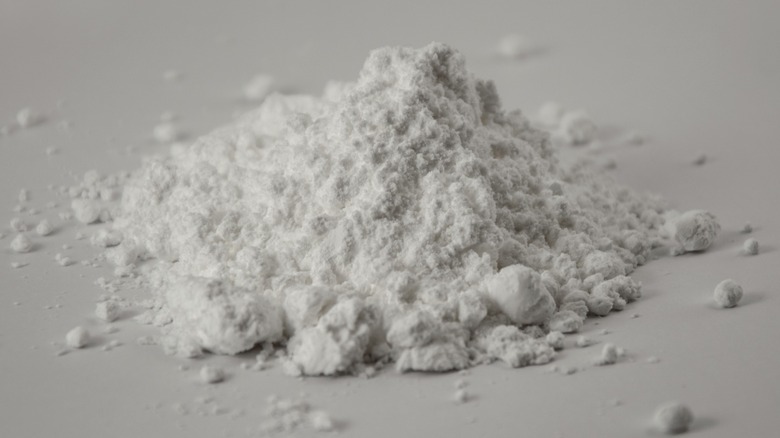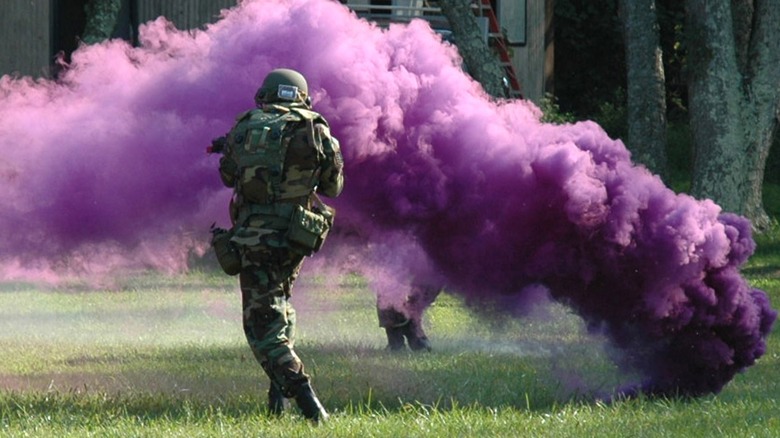The US Army Is Buying 30 Tons Of Powdered Sugar (And It's Not For Donuts)
The United States Army has a lot of personnel to feed, which is why it routinely buys 25 tons of food each month for a battalion-sized unit. That's a lot of chow for a good number of soldiers, but a recent purchase is a bit different. In October 2025, the U.S. Army purchased 30 tons of powdered sugar, and needless to say, that's a lot of the sweet stuff. While you might assume it's for several million beignets, it's not meant to be eaten — it's for grenades.
The Army uses a variety of grenades, including a project that turned footballs into the deadly devices, so there's much more than fragmentary hand grenades in use. There are colored smoke marker grenades as well, and these have been using none other than powdered sugar for decades. A press notice from Army News Service in 2007 explained the transition to sugar as an effort to remove dyes that were potentially harmful. They were used first in the M18 Smoke Grenade, which comes in yellow, green, red, and violet.
When a gas grenade is ignited, the old style with dye would vaporize and condense into a colored cloud, relying on sulfur-based fuel to generate the heat to vaporize the dye. If it made contact with the skin, it could cause a burning sensation or even worse problems if inhaled. Switching to sugar mitigated these concerns, making for a much safer tool that is used throughout military operations to mark drop zones, pick-up locations, targets, and more.
How the Army switched from harmful chemicals to good ole' powdered sugar
The Army's order of 30 tons of powdered sugar called for different varieties related to particle size. These included 5X, 10X, and 12X, which the service desired in 50-pound bags. The higher numbers indicate finer particles. The sugar works with potassium nitrate, a key ingredient in gunpowder, as its oxidizer, which doesn't result in an explosion. Instead, it transforms the fine sugar particles into a non-toxic cloud.
The smaller the particles, the denser the smoke, which can spread over a large surface area. The Army ordered around 65,000 pounds, and each M18 grenade weighs less than a pound. This suggests that there will be no shortage of grenades for quite some time. It's unclear how much the Army spent on the sweet material, but a pound of something similar in the grocery store runs between $2 and $3, depending on quality. Taking the low estimate, American taxpayers apparently spent around $130,000 on sugar in October 2025.
That's a bit more than you'd expect for an average family. Of course, the Army is a sizable force that regularly uses smoke grenades, so it requires a lot of them. The Army's powder sugar order is in support of multiple devices, including the M83 Grenade Program and M8 Smoke Pot Program, which are used primarily in training exercises. They are used to produce large clouds of smoke to simulate battle situations, and they, too, rely on sugar as the primary ingredient in producing their output.

